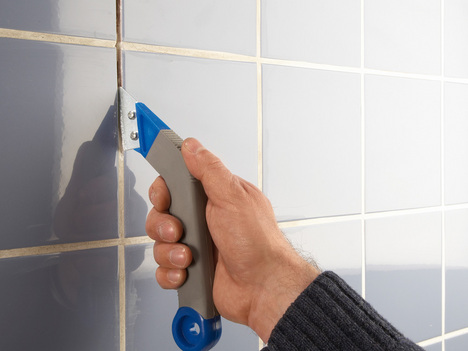Tiles in the corner: hiding the joints
When finishing walls with tiles, the problem of laying tiles in the corners often arises. This is especially true for the bathroom, since it is here that these areas are a mandatory attribute of the interior. To make an even angle, various methods are used. Some will require some skills and a special tool, some can be successfully implemented even by novice craftsmen.
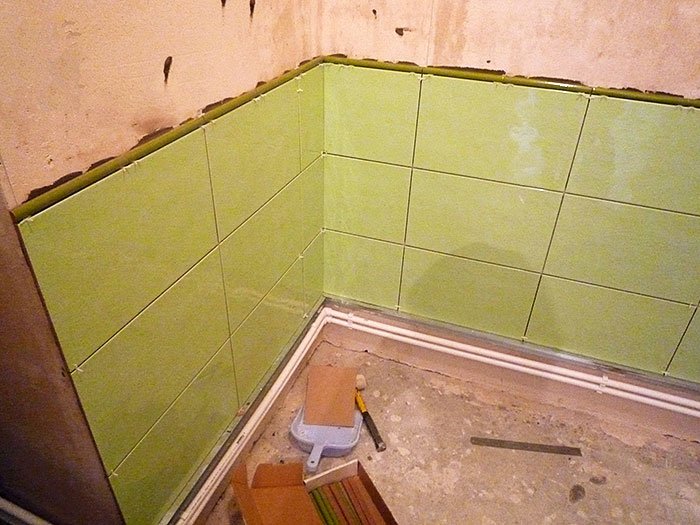
The content of the article
How to lay tiles in corners: basic rules
There are several options for connecting tiles:
- Perpendicular connection. The simplest way to solve the problem is a direct connection. In this case, the tiles are laid at 90 degrees, that is, one cut remains open, and the second is disguised under the top element. This way you can close any corner with minimal effort. If tile trimming is required, it is best to install the cut from below. The disadvantage of this method is the seam when connecting. Subsequently, it is masked with grout, but it is still visible on the surface.
- Trims. The most popular option is probably the installation of special elements - trims. This is a plastic profile that forms the necessary direction. For external corners, an L-shaped installation is used. The internal corner has the shape of an arc. Sometimes narrow convex trims are used.
- Pruning. This method is based on trimming the edge of the slab.It is performed in such a way that the fragments can be connected to each other at 45 degrees.
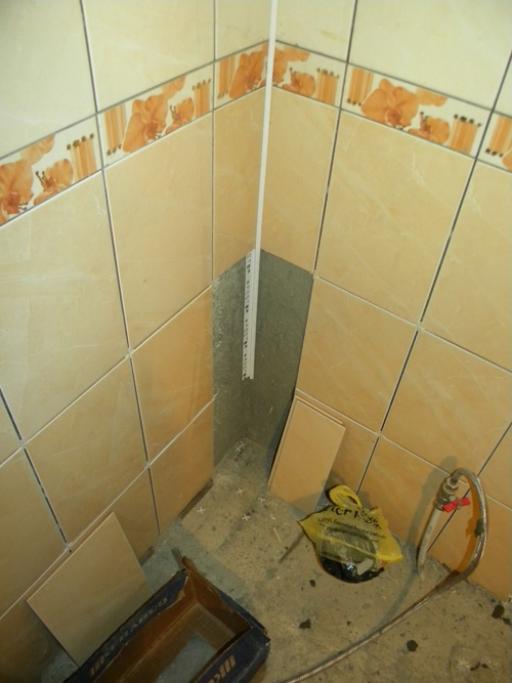
Getting rid of joints: step by step
Before laying the tiles, you need to lay them out. The quality of the work done depends on how correctly this process is performed. Before laying out, measurements of the room are taken, then a visual inspection is performed, assessing the surfaces of the walls where the tiles will be glued.
If required, additional surface preparation is performed. During laying, you need to inspect all the walls to choose the installation method. If the corner is invisible due to furniture, then the installation option in this place will be the simplest.
In the inner corners
Simply joining two rows of tiles has many benefits. To begin with, a corner made in this way looks as organic as possible, especially in small bathrooms. Also, this installation option will not require additional elements, which will significantly increase the cost of cladding.
Naturally, this method has disadvantages. This is construction experience as a basic condition, and there is a high probability of a crack appearing at the joint due to the tendency of ceramics to narrow and widen. Moreover, this problem is relevant when finishing drywall, but on brick surfaces this practically does not happen.
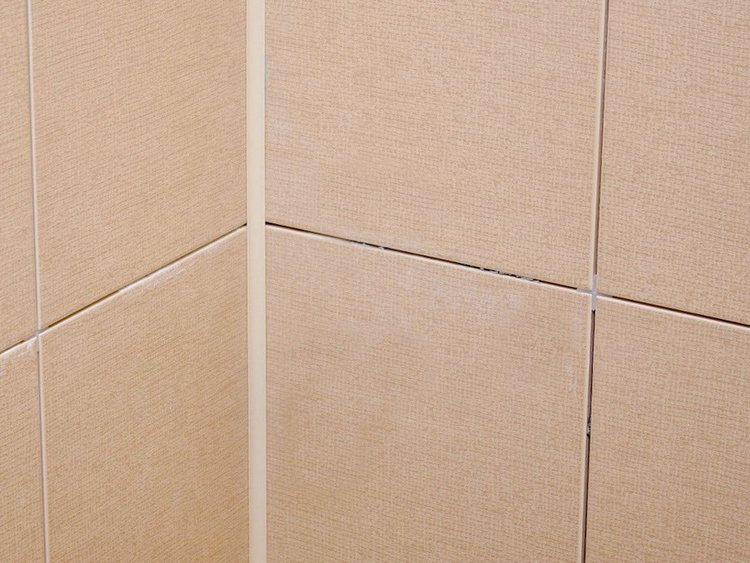
Prevention of cracks is:
- treatment of seams with silicone;
- correct calculation of joints.
Attention! Facing an internal corner without installing an overhead corner is unacceptable. As a result of this masonry, a black gap will appear on the seam. You can only get rid of it with silicone. But choosing the exact color is almost impossible.
In outside corners
Installation of decorative trim is carried out when one of the walls in the bathroom is completely tiled.Afterwards, sealant is applied along the height using a construction gun. The even part of the trim is applied to the already glued tile, and the groove of the element is freely located on the adjacent wall.
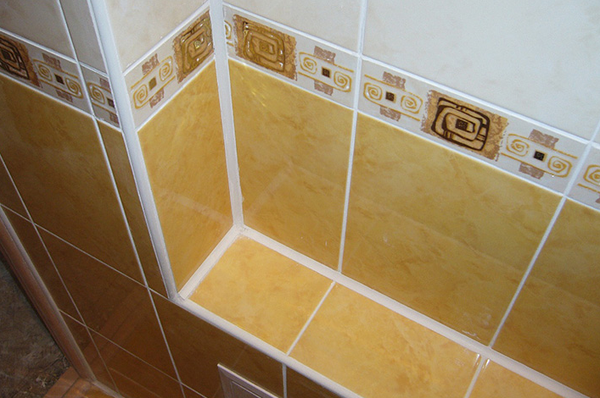
Subsequently, the ceramics are laid on this wall, starting from the bottom, and the edge of the tile is inserted into the trim groove. The next day after completion of the work, the joint between the ceramics and the corner is rubbed down. Trim is also installed in joints that are in a horizontal plane.
Laying tiles yourself is not an easy task, but it is quite doable even for beginners. The main requirement is a perfectly flat surface and correct layout.





